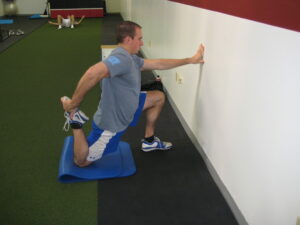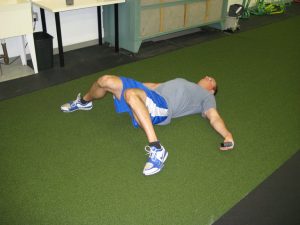Hip Injuries In Baseball
Q&A: Hip Injuries in Baseball
Q: On Sunday, The New York Times published this article that discusses the dramatic increase in hip injuries in Major League Baseball in recent years. I know you work with a ton of baseball players and was curious about your thoughts on the article. Do you agree with their theories?
A: As always, my answer is “kind of” or “maybe.” I think they make some great points in the article, but as is the case with mainstream media articles, they’re written by reporters with word count limits, so a lot of the most important points get omitted. For example, with respect to the hips, it isn’t as simple as “weak or strong.” You can have guys with ridiculously strong adductors that are completely overused, balled up, and short – but terribly weak hip extensors and abductors. So, part of the problem is that journalists don’t even qualify as casual observers to exercise physiology, so the public only gets part of the story.
(Sorry, but that digression was totally worth it.)
First, I agree that one of the reasons we are seeing more of these issues is because doctors have become better at diagnosing the problems. The “corollary” to this would be that the issues are perceived as more severe because so few physical therapists, athletic trainers, and strength and conditioning coaches are comfortable treating and preventing the problems. That’s not to say that hip issues aren’t serious in nature; it simply implies that there is a divide between diagnostic capabilities and treatment/prevention strategies.
Second, I agree wholeheartedly that early specialization at the youth levels can lead to injuries down the road. We’re dealing with some significant rotational velocities at the hips. In previous analyses of professional hitters, the hips rotated at a velocity of 714°/second. This same velocity isn’t the same with little leaguers, but with skeletally immature children, it doesn’t take as much stress to impose the same kind of damage. So, I don’t see it as at all remarkable that some pro ballplayers have hip problems after they may have played baseball year-round from age 9 all the way to the time they got drafted. They also have bad shoulders, elbows, knees, and lower backs that have taked years to reach threshold. It just so happens that folks are getting better at diagnosing these problems, so we now have an “epidemic,” in some folks’ eyes.
What I can tell you, though, is that it’s borderline idiocy to think that strength training is responsible for these problems. Injuries don’t occur simply because you enhance strength. In fact, muscular strength reduces the time to threshold for tendinopathies, and takes stress off passive restraints such as ligaments, menisci, labrums, and discs. Making this assumption is like saying that strength training drills to bolster scapular stability may be the reason we see more shoulder and elbow injuries nowadays. Um, no. Shoulders and elbows crap out because of faulty mechanics, poor flexibility (e.g., shoulder internal rotation ROM), bad tissue quality, and muscular weakness. Granted, the shoulder (non-weight-bearing) and hips (weight-bearing) have different demands, but nobody ever tried to pin the exorbitant amount of arm problems in pitchers on “the advent of strength training.”
That said, injuries occur when you ignore things that need to be addressed: pure and simple.
To that end, I can tell you that a large percentage of the baseball players I see – including position players, pitchers, and catchers – have some signficant hip ROM and tissue quality problems. In terms of range of motion, the most common culprints are hip internal rotation deficit (HIRD) and a lack of hip extension and knee flexion (rectus femoris shortness). Pitchers are often asymmetrical in hip flexion, too, with the front leg having much more ROM. In terms of tissue quality, the hip external rotations, hip flexors, and adductors are usually very restricted.
This is has proven true of guys who lift and guys who don’t lift. The latter group just so happens to be skinny and weak, too!
Done appropriately, strength training isn’t causing the problem – particularly when we are talking about huge contracts that restrict how aggressive programming can be. Trust me; guys with $20 million/year contracts aren’t squatting 500 pounds very often…or ever. The risk-reward is way out of whack, and no pro strength coach is going to put his job on the line with programming like that.
However, strength training may be indirectly contributing to the problem by shifting an athlete’s focus away from flexibility training and foam rolling/massage. Pro athletes are like everyone else in this world in that they have a limited time to devote to training, but to take it a step further, they have a lot of competing demands for their attention: hitting, throwing, lifting, sprinting, stretching, and soft tissue work. So, they have to pick the modalities that give them the biggest return on time investment and prioritize accordingly in terms of how much time they devote to these initiatives. Some guys make bad choices in this regard, and hip flexibility and tissue quality get ignored.
Baseball is a sport that doesn’t permit ignorance, unfortunately, and this is one of many reasons why it has one of the highest injury rates in all of professional sports. We are talking about an extremely long competitive season with near daily games – a schedule that makes it challenging to maintain/build strength, flexibility, and tissue quality. Throwing a baseball is also the fastest motion in all of sports. Rotational sports have the pelvis and torso rotating in opposite directions at the same time. And, as I noted in Oblique Strains and Rotational Power, most professional ballplayers have a stride length of about 380% of hip width during hitting. It is really just a matter of which joint will break down first: hip, knee, or lower back. Taking immobile hips with poor tissue quality out into a long season with these demands is like doing calf raises in the power rack when someone is around with a video camera: you are just asking for a world of hurt.
So, what to do? Well, first, get cracking on tissue quality with regular foam rolling and massage (the more an athlete can afford, the better). Here is the sequence all Cressey Performance athletes go through before training.
In many of our guys, we also add in extra adductor rolling on the stretching table.
Second, you’ve got to hammer on flexibility. We spend a ton of time with both static stretching and dynamic flexibility. Here are a few of the static stretching favorites (the first to gain hip internal rotation, and the second to gain hip extension and knee flexion ROM):

Third, as Dr. Eric Cobb has written, you use resistance training to “cement neural patterns.” This includes all sorts of lower-body lifting variations – from single-leg movements, to glute-ham raise, to deadlifting and squatting variations – and multi-directional core stability drills. And, often overlooked is the valuable role of medicine ball training in teaching good hip (and scap) loading patterns:
For more information, check out my previous newsletter, Medicine Ball Madness, which describes our off-season medicine ball programs in considerable detail.
All taken together, my take is that the increase in hip injuries at the MLB level has everything to do with early baseball specialization and improved diagnostic capabilities. However, when you examine hip dysfunction under a broader scope, you’ll see that this joint breaks down for many of the same reasons that lower backs and knees reach threshold: inattention to tissue quality and targeted flexibility training. Strength training works synergistically with these other components of an effective program just like it would at any other joint.
*A special thanks goes out to Tony “Explosive Calves” Gentilcore for being a good sport in the videos in this newsletter.
Sign-up Today for our FREE Baseball Newsletter and Receive a Copy of the Exact Stretches used by Cressey Performance Pitchers after they Throw!




